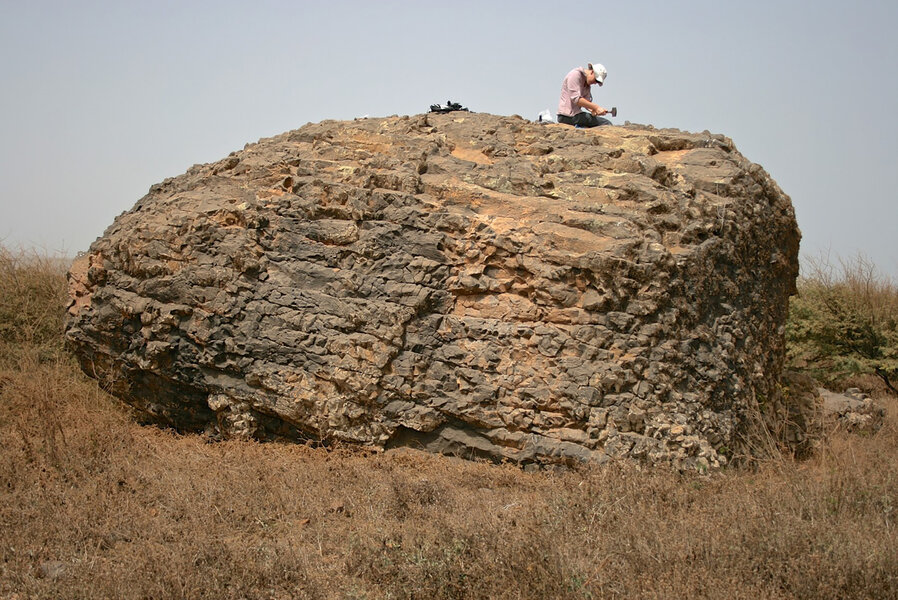Scientists discover huge tsunami 73,000 years ago. Could it happen again?
Loading...
Waves the size of the Chrysler building may seem like they belong in a movie trailer, but scientists have recently found that megatsunamis are all too real.
Scientists say that 73,000 years ago, a large flank (or slope) from the volcanic island Fogo in the Cape Verde islands off the coast of Africa fell into the ocean and triggered a tsunami that could – quite literally – move mountains.
“You’re displacing a huge mass, which must generate movement of water,” Ricardo Ramalho, the lead researcher behind the study, told The Washington Post. “And in the case of volcanic flank collapses they can be very acute, because you have all the mass collapsing basically into the oceans.”
Scientists knew Fogo experienced a collapse thousands of years ago because a nearby seafloor shows evidence of a huge rock avalanche. They also already expected that this avalanche caused a tsunami 30 miles away on the island of Santiago, but there has been disagreement over just how big it was. Until now, scientists assumed the collapse happened in stages instead of all at once, only triggering several smaller tsunamis. A recent study of the Fogo collapse in 2011 by French scientists suggests that there were multiple waves, registering only 45 feet in height.
So what was Dr. Ramalho’s proof for a megatsunami? Rocks. Really, really big rocks.
When Ramalho was on Santiago in 2007, he found large boulders on top of a high plateau, near a sheer, vertical cliff. Ramalho and his colleagues were able to trace the boulders’ origin to the cliff below because the rock types “exclusively crop out on the cliff faces and lower slopes of the plateau, implying a source at considerably lower elevations.” As The Christian Science Monitor's Joseph Dussault reports, the scientists found that the boulders were composed of marine rock, whereas the surrounding terrain was made of young volcanic rock.
There seemed to be only one force powerful enough to move these rocks 800 feet above their original location: a megatsunami.
By studying the unique isotopes on rock surfaces, the scientists were able to date the 700-ton rocks back to the same time in history as Fogo’s volcanic collapse. Fossils scattered thousands of feet above sea level also act as proof for one, massive wave, suggesting the megatsunami left marine animals on the high plateau.
So can we expect another prehistoric catastrophe any time soon?
In their study published in the journal Science Advances Friday, the authors cite precaution as a main reason for their work. The scientists suggest their findings “further demonstrate that flank collapses may indeed catastrophically happen and are capable of triggering tsunamis of enormous height and energy, adding to their hazard potential.”
This recent theory is questioned by other scientists in the field, who doubt that our big volcanoes today could collapse suddenly. “Rather, they envision landslides coming in gradual stages, generating multiple, smaller tsunamis,” the Earth Institute at Columbia University said in a press release.
But either way, its hard to prepare for a tsunami, big or small. Although many of the world's biggest cities are located close to an ocean, scientists still have a hard time predicting when and where tsunamis will hit. Scientists can study fault lines as they do for earthquakes, but it is difficult to project which direction tsunami waves will move.
And although Ramalho believes a similar collapse is possible, he doesn’t want his megatsunami theory to cause a mega-freakout.
“We need to start thinking coolly and rationally, what can be done in terms of disaster risk reduction,” Ramalho told the Monitor. “How may we respond to such a crisis, and what measures can be taken at short, medium and long term to increase our society’s resilience to their threat?”






